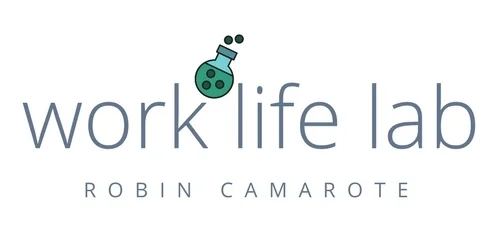3 minute read
Peace, love, and masks
“Get a grip”
That was our Superintendent’s advice to us- a group of parents organizing ourselves on Facebook around the return to schools. The tweet popped up last Monday, a little after lunch. I burst out laughing, dotting my screen with little bubbles of Razz-Cranberry La Croix.
It was the validating bone the group needed to gnaw on for the day. “See?! See?!”
You see, outraged folk without direct power need moments to react to, to talk about. Without offense, we just stew and speculate and stew some more.
A couple of weeks ago, I’d wandered into this newly hatched Facebook group. It was started as an online gathering place for parents wanting our kids back in school. We shared our frustrations with months of changing back-to-school dates. While this dynamic is playing out all over the country, this group is just for our small Falls Church City community. These sideboards allowed it to get personal, fast.
Threads range from reasoned to ridiculous- some devolved into rumor and blame. As confusion and negativity grew, our Superintendent was a frequent target. So none of us should have been surprised. If we’d intended the combative dialog to be a trap, he walked right in with “get a grip.”
The funny thing is that it’s not actually bad advice.
When emotions run hot, we benefit from taking a minute to breathe, hook back into reality, and get clear on what’s most important to us.
Unfortunately, he was the wrong messenger.
It reminds me of this too true quote about calm down.
On cue, our Facebook group went bananas. Surely with a sigh and an eye roll, he deleted the tweet and went back to work.
But his intent stuck with me. I tried it on, looked in the mirror, did a little spin.
What would “getting a grip” look like for me?
I lost my grip a while back when I started to obsess over figuring out our teachers’ concerns. I wanted to know which teachers were worried about what issues. I figured fears of contracting the virus could only be part of the truth— given the sea of contrary data on transmission. If I could just know the REAL reasons, we could magically manifest the solutions, and unlock this whole thing. I reached out to the limits of my personal relationships with our teachers and came up with genuine assurances that they were ready and eager to get back. Who then were the resistors? Where were they? What was really going on? I needed to know!
So, how does one empathy-drained and entitled mom move from a focus on what’s owed to me and my kids to one who knows there are no “right” answers in this confusing and unprecedented situation?
For me, “getting a grip” meant accepting that there are answers I can’t have. And in the absence of information, I can’t assume to know how to fix the issues.
I’m also reflecting on temporary versus permanent damage.
Damage to our kids is what we’ve been worried about all along—falling short of knowledge standards, friendships neglected into extinction, missed competitive skill-building time on the field, long-term screen addictions…. and the big catch-all for social and emotional wellness.
After sitting with this for a couple of days, I’m coming around to a mantra repeated to me by more than a few wise women. This is temporary. It’s going to be okay.
When calm, I know this to be true. Believing we’re going to be okay requires faith that these are passing conditions we can manage through our resourcefulness and resilience.
And there’s still the very real possibility of our kids being better for this. Overcoming obstacles is the unifying theme among people we admire. What if the challenges of the last year end up becoming the very thing that makes this generation great?
Permanent damage is different and the result of broken relationships.
What if our acute frustration now ended up permanently damaging—or destroying—the relationships and community spirit we bought into in the first place?
Every one of us moved here on purpose. We wanted to make our homes in these neighborhoods because they’re filled with other generous, caring families. Those families became our friends. We wanted these schools because they’re filled with ambitious, connected teachers and administrators. Without these friends, neighbors, and partners in education, we’re just rows of houses, blocks of brick buildings, and a dry, state-mandated curriculum.
With a bit of newfound grip, what if we focused instead on…
Kids back in school. We turn down the heat and pause the sharp-edged emails and calls. We trust the administration to do their work without distraction. These are smart people combing through every possible scenario and scientific study to try to meet an impossible task. We’ve been heard. We’ve reaffirmed we all want the same thing. So now let’s focus on getting to Feb. 22nd and go from there. They now need our energetic support.
To teachers, specifically, we so appreciate you and what you do. I’m worried that a few are speaking out, and the majority are left unheard. Each of you brings a unique perspective, vision, and skillset to the classroom. Schools aren’t the sum of interchangeable parts. They’re a dynamic collection of individuals. Please consider not letting anyone speak for you who can’t speak to the whole of you. Advocate for yourself. Let’s get back to honoring your unique contribution and individuality.
As a community, we need to get our shit together, together. Through formalized groups like our PTA or informal blocks of neighbors and friends, we can come out of this stronger and more connected then before. We have to.








